Ethereum Price Prediction in 2020: The Ultimate Guide [Updated]

What is the best way to conduct effective Ethereum price prediction in 2020? Today many new traders today are asking “Should I invest in Ethereum?”, while even many experienced traders are considering whether a resurgence in Ethereum’s price is likely in 2020.
Ethereum is one of the undisputed darlings of the cryptocurrency industry, and has led the introduction of thousands of new cryptocurrencies since 2016.
Ethereum has delivered a myriad of opportunities to projects looking to build blockchain applications, Ethereum’s iconic figurehead, Vitalik Buterin, is widely seen as an ambassador for cryptocurrency as a whole, and the gargantuan ROI that Ethereum investors have seen has been largely unmatched to date.
We’re going to explore the world of Ethereum, breaking down what it really is and where it can be traded. We’ll move on to look at some of the factors driving Ethereum’s value, including the technical upgrades and improvements being introduced with Ethereum 2.0 in 2020, and the best places to trade Ethereum.
We’ll finish off with a rundown of expert opinions from crypto forecasters and analysts on the likely path the price of Ethereum might take in 2020 and beyond.
What is Ethereum and why does it have value at all?
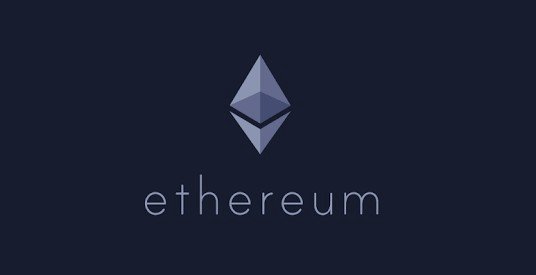
Ethereum is currently the world’s second largest cryptocurrency by market capitalization, and was the revolutionary brainchild of renowned crypto-engineer, Vitalik Buterin.
Buterin had previously worked for the Bitcoin Magazine, and studied the Bitcoin source code throughout 2010 and 2011. After learning about how Bitcoin worked, he suggested to the core developers that the functionality of Bitcoin could be expanded to allow for users to be able to add code to the blockchain.
When Buterin’s suggestion was dismissed, he set about designing his own cryptocurrency which would have the ability to allow users to program and run code on the blockchain itself.
Ethereum was created in 2013 following the release of its whitepaper by Buterin in that year, and in 2014 he met with a small group of other crypto enthusiasts in a conference in Miami who ended up becoming the founders of Ethereum.
These included computer scientist, Gavin Wood, now-Cardano-founder, Charles Hoskinson, and well-known crypto personality, Joseph Lubin.

Where Bitcoin and other cryptocurrencies at the time were primarily used as a store of value, Ethereum used computational objects called “smart contracts” to create code, upload it to the Ethereum blockchain, and then to run it.
Buterin also created a native turing-complete programming language for Ethereum called Solidity, which is modelled on javascript to a large degree.
Although today there are a number of so-called “protocol coins” which allow for similar programmability, at the time of the launch of Ethereum it was a revolutionary idea that garnered widespread attention and interest.
Ethereum’s exposure and value exploded as a result of the “ICO boom” of 2016 and 2017, in which hundreds of projects began using Ethereum to create their own cryptocurrencies.
Prior to this, the process for creating a cryptocurrency was typically either to copy or “fork” Bitcoin’s code and make slight modifications, or to go through a lengthy and complicated process of creating fresh code from scratch.
Ethereum allowed for a fairly streamlined process to be executed where projects could quickly and easily design and implement cryptocurrencies, and this led to a surge of investment coming into the cryptocurrency market as it grew in size.
As well as creating entirely new cryptocurrencies, Ethereum also allowed projects to create decentralized apps, or “DApps”, and decentralized autonomous organizations, or “DAOs”, both of which have had limited success compared to initial coin offerings (“ICOs”), but have seen widespread attention and focus also.
Where has Ethereum’s Price been and where is it today?
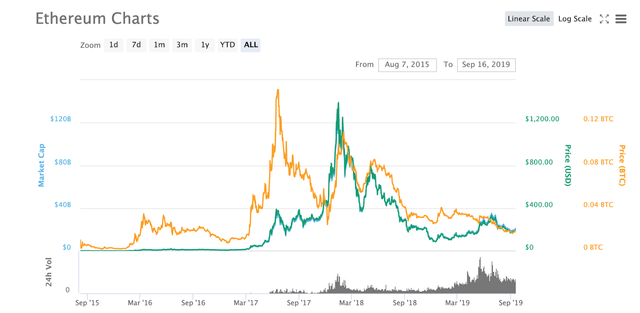
Ethereum price prediction has been difficult since its inception — typically not because of overestimation, but conversely because it would have been almost impossible to predict that the project could become as successful as it has today.
The price of 1 ETH during the Ethereum ICO was $0.31, and with today’s current value at almost $200 the ROI of investing in Ethereum over time sits at around 620x.
Over a period of 42 days, the Ethereum ICO raised over $18 million which was the largest at that point in time, and stunned many who were monitoring the state of the cryptocurrency industry.
Following its ICO, Ethereum’s price quickly rose to being over $2 per ETH and floated in between that price and $15 from 2015 right up until mid-2017, when the infamous bull run of that year started to take off in a major way.
Over the course of the second half of 2017, Ethereum would become one of the best performing cryptocurrencies by ROI, fuelled by the ongoing ICO boom and public interest from the mainstream typically being focused on either Bitcoin and Ethereum.
The peak of 2017’s bull run saw Ethereum reach a new all time high of $1377 on January 16th 2018, delivering a jaw-dropping ROI for anyone holding since the ICO of 444,000%.
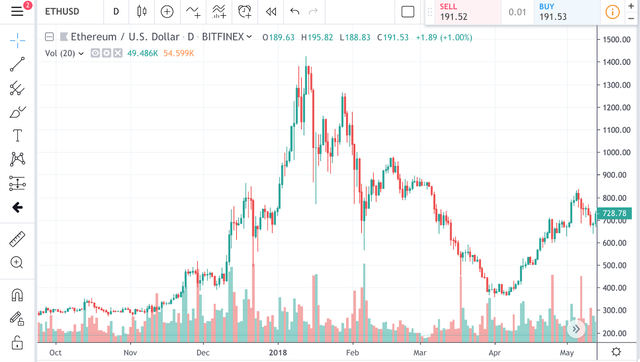
As with all other cryptocurrencies, January 2018 saw the beginning of an equally jaw-dropping crash in prices with vast amounts of capital moving out of the crypto market, and consequently by April Ethereum’s price had been shaved down by over 72% to just $384.
2018 was bleak for all cryptocurrencies, with Ethereum not being excluded from that. Over the course of the year its price toppled to a low in December of just over $84, with a total price collapse since its all time high of almost 93%!
Since the reversion of 2018’s bear market, and 2019’s resurgence of crypto-assets, Ethereum has seen modest growth from $84 up to a current price of just under $200.
Although this growth is surely positive, Ethereum (and all altcoins in general) have not enjoyed the same levels of growth as Bitcoin in 2019, and this leads many to believe that throughout the end of this year or in 2020 an “altcoin boom” will be likely to occur.
What are some signs that 2020 could see some new all time highs?
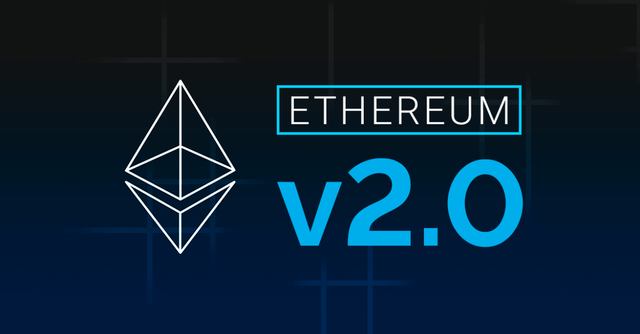
While Ethereum has been widely lauded and has built a huge following from within the cryptocurrency industry, the project’s core problem has been with the network’s inability to deal with speed and scalability.
Throughout much of 2017 the huge influx of new users, and more poignantly, the huge influx of new cryptocurrencies and DApps sharing the networks bandwidth, exposed flaws in the system that were preventing Ethereum from effectively scaling to deal with higher throughput.
The roadmap planned for the project throughout 2020 and the years to come is clearly focused on addressing this problem. Ethereum 2.0 as it’s known, has two main facets both designed to improve scalability, and to reduce transaction times and costs.
The Introduction of a Proof-of-Stake Mechanism
Late 2019 will see the launch of Ethereum 2.0’s “Beacon Chain”, which is a proof-of-stake (PoS) chain that will run in parallel to the current proof-of-work (PoW) chain being used by the network.
Initially, Beacon Chain will not support smart contracts or accounts with the goal being to prioritize simplicity, and to reduce the complexity of switching from PoW to PoS.
Ethereum users have long-awaited for the transition to PoS, with the desired effect being that transfer costs will drop, and an increased flexibility in the way the system operates will allow for higher transaction throughput without the constrictions inherent in mining-derived transaction speeds.
The Introduction of Sharding
“Sharding” is the process of dividing the Ethereum network across many sections known as “shards”, allowing for the concurrent processing of many transactions at once.
Proof-of-work requires all full nodes to store the data of the Ethereum network, and the algorithm used to achieve consensus is highly compute intensive.
As the Ethereum network has grown, more transactions and a larger number of miners has led to a bottleneck in the ability for the system to deal with these technical constraints.
Sharding is a method of tackling this issue, by partitioning parts of the data and transactional processing functions across different nodes within the network, alleviating the need for all nodes to store all data and process all transactions.
Instead of building these upgrades into the existing Ethereum system, Ethereum 2.0 is a separate system being built, which will replace the original system once the adaptations and testing are completed.
The Beacon Chain is penned for launch in late 2019, and sharding will be introduced into the network in 2020.
If the changes being implemented by Ethereum 2.0 are successful in mitigating the scaling and speed issues seen so far, there is a likelihood that as Ethereum’s functionality improves, so will adoption, and therefore its value if likely to increase significantly.
Where are the best platforms for investing in Ethereum?
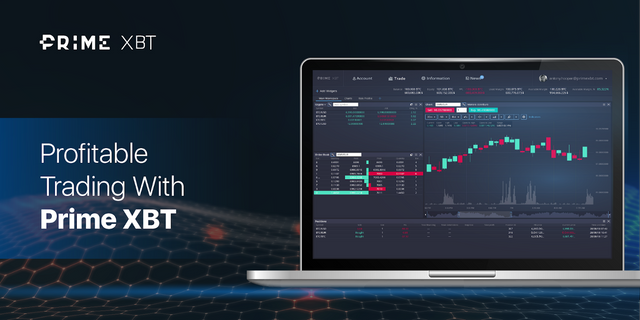
The Best Crypto Brokerage for ETH Trading: PrimeXBT
PrimeXBT is a multi-asset trading platform that has quickly grown throughout 2019 to become the world’s leading cryptocurrency brokerage, and allows for Ethereum trading using advanced, powerful tools.
PrimeXBT provides the highest leveraging available in the cryptocurrency industry of a ratio of 1:100, and where other platforms only provide Bitcoin margin trading, PrimeXBT allows for 100x leveraging on all crypto-assets listed, including Ethereum.
As well as high leveraging of Ethereum, shorting is also available on the platform, and strategies involving a combination of Ethereum shorting and leveraging can be implemented.
Where other platforms are renowned for problematic technical issues, PrimeXBT has built a reputation for the reliability of its trading engine, and for integrating a trading interface into the system which allows for effective charting and trade execution.
Fees on Ethereum trading, as well as all other assets, are the lowest in the market at 0.05%, and as well as listing the top crypto-assets, PrimeXBT traders can concurrently trade on 30+ of the top traditional assets, such as the NASDAQ, USD/EUR and Crude Oil.
The Best Crypto Exchange for ETH Trading: Binance

Binance has built a reputation for listing a wide range of assets, and providing a quality trading interface for traders.
Although Binance’s fees are higher than PrimeXBT’s, they can be reduced to 0.075% by purchasing and holding an amount of their native coin, BNB.
While Binance has recently suffered a hack where $40 million of user funds were stolen, prior to this the platform was known for having good security, and since the hack Binance has implemented further upgrades in order to attempt to prevent future hacks.
Binance lists hundreds of cryptocurrencies, but remains solely crypto-centric, and doesn’t allow for fiat deposits or for traditional asset trading.
Saying this, for those who already have cryptocurrency and would like to trade or invest, Binance is a good choice and is typically well-respected in the industry.
What do Ethereum Price Prediction experts have to say?

Other smart-contract-based cryptocurrencies like EOS, Tron, Cardano, NEO, Tezos and Stellar are all working to try to bring improvements on the design of Ethereum, and in so doing so, replacing Ethereum as the leading protocol coin.
Currently Ethereum’s marketcap is vastly larger than even the closest of these competitors, at around 5.5x the size of EOS.
While there are a number of experts and influencers that support the merits of other protocol coins, there is a widespread acceptance in the industry that Ethereum is uniquely positioned with Bitcoin to take primary roles in the future of cryptocurrency.
Bobby Ullery
Crypto analyst, Bobby Ullery, has designed a model in which he predicts that the total marketcap of all cryptocurrencies will reach over $4.5 trillion in 2020, and that Bitcoin and Ethereum will share 25% each of this value.
This would see Ethereum with a marketcap of over $1 trillion, and a price of around $9,000 per ETH. Being that mainstream financial markets are poised to heavily move into crypto investment in the coming few years, and that Ethereum’s current all time high is already at around $1,300, this prediction may have merit.
WalletInvestor
Asset forecasting platform, WalletInvestor, has made a distinctly bearish prediction on the value of Ethereum through 2020 and beyond.
They predict that in 2020 the value of Ethereum will fall to $42, and will take until 2025 to recover to a price of $230.
Although this prediction may be valid, it is decidedly bearish compared to other predictions, and would completely go against the long-term trends of Ethereum and cryptocurrency as a whole.
The prediction also seemingly ignores the influx of institutional money which is currently teetering on the edge of flooding cryptocurrency markets.
Coinswitch
Coinswitch has made a prediction that by the end of 2019 ETH will be at around $1449, and that by 2022 that will grow to roughly $2500 per ETH.
This prediction, while bullish, is still fairly moderate, but would fit well with the past price actions of Ethereum.
A move back towards the previous all time high of $1,300 during a bull run in 2019 and 2020 would be logical, as would further growth in the years to come as Ethereum irons out some of the scaling issues they have faced.
In Summary: Ethereum Price Predictions for 2020 and beyond
Ethereum is undoubtedly one of the glowing success stories of cryptocurrency, and while there have been significant issues with the technical capacity of the Ethereum blockchain to deal with scaling, there’s optimistic hope that Ethereum 2.0 will all but eradicate these issues.
Ethereum remains firm as the world’s second largest cryptocurrency for good reason. Not only is Ethereum a project which is nearly unequalled for it penetration into the mainstream consciousness, but it was the first project to follow Bitcoin by creating something else truly revolutionary.
Although Ethereum’s price growth through the first half of 2019 was luke warm, there is optimism that in the second half of 2019, and in 2020, for a new altcoin boom to be triggered by Ethereum, and for profits that even exceed that of 2017 to be just around the corner.